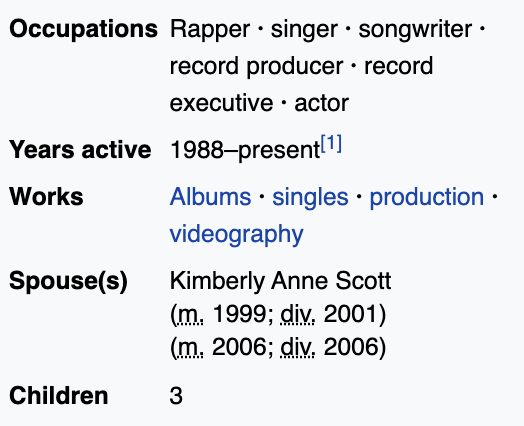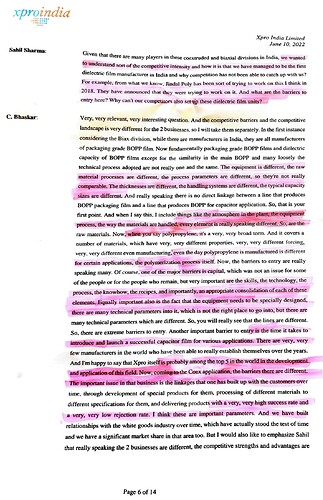Its been a long time since i wrote on VP on my pf thread (i continue to write on company threads). I think i owe the forum an explanation & some updated thoughts.
2022 has been a year of constant & powerful learning for me personally. Let’s summarise. I have learned that investing is about a lot of things but its most importantly about balancing between extremes along many different dimensions.
-
The tension opportunity cost & letting businesses compound: The primary reason that equity returns are volatile is because underlying business cycles & competitive landscape are volatile. There are years where Laurus labs gives investors decades worth of returns & then there is 2022 where years worth of returns can evaporate. The problem is that we as a group tend to extrapolate everything. That is the very nature of the modelling exercise. You’d model for 15% growth, 20% growth or 25% growth. What we dont model is the volatility of the growth. The +25% CAGR might play out as: +50%, -10%, 0%, +50% & so on. This is the nature of most industries & businesses because there are too many dynamic self adjusting systems at play here: ARV demand, ARV pricing, ARV supply, increased competitive intensity, new therapies, growth of CDMO, questions over sustainability of CDMO growth given size of CDMO (& comps with other large domestic CDMOs). The underlying business volatility manifests itself in critical questions investors need to answer. Am i going to hold through a downcycle, or sell out, only to revisit later on. the answer cannot & will never be a once answer fits all. That is because different investors have different life circumstances, experiences, objectives & goals. Just sampling 2 from the large combinations of these:
(i) A seasoned investor with a > 100 cr portfolio who has a well diversified portfolio & is financially independent, been in stock markets for 20 years & broadly knows what they are doing. If they have had meaningful interactions with Dr chava, visited laurus’s plants, listened to each concall & knows the strong non-arv pipeline lined up as well as large capex laurus is executing for CDMO & bio, they might actually be tempted to buy more at lower valuations as arv cycle plays out.
(ii) A relatively inexperienced investor who has orders of magnitude smaller portfolio, is just getting started out & really only have 3-4 years of experience. Running a much more concentrated portfolio that (i). Perhaps for them (this is me), it would be arrogant to overestimate their ability to deeply understand Laurus’s competitive advantages & thus claim for it to be ok to buy & hold. Perhaps for them, the higher churn (selling on business momentum breakdown) also provides an ability to study an order of magnitude more businesses (its difficult to overcome ownership bias & study a random business as if i own it) as they look to upskill, learn & improve their ability to understand the competitive advantages of a business from the lens of predictive power for future earnings growth potential.
I firmly believe (contrary to many other investors opinion) that even for a single investor the answer cannot be a binary. The answer has to depend on the factors at hand: business, industry, longer term growth potential, the current valuation & most importantly my understanding of the business & industry & my confidence in my understanding. The way things stand today, i am more than happy to hold shivalik through temporary business downturns as long as the medium term (2-3 year) visibuiity of demand led by EVs looks strong & perhaps even add more at saner valuations. At same time,
saregama at 45x earnings might get dubbed as a consumer play, but the earnings growth visibility is simply not strong enough (this is a personal opinion). This is why i was happy to sell saregama (2nd player by revenue & subsriber base) around 45x earnings but buy shivalik (unquestionable indian leader with elements of global cost & quality leadership) around 27x TTM earnings with a hope that i am able to add more at lower levels. A latest co i find in similar bucket as Shivalik is XPRO which seems to be giving investors an opportunity to back up the truck & load up (more on xpro later). -
Whether it makes sense to pay up for structural growth: There are multiple examples available of companies where structural growth with long visibility exists. Eg:
(i) data pattern (works on full systems engineering like Deep space radars, avionics for Tejas, guidance system for brahmos: 30% cagr guidance)
(ii) MTAR (Bloom; largest client has 30% growth guidance for 1 decade, makes rocket engines for Agni V, GSLV, PSLV)
(iii) Rainbow children hospital (guidance of 20-25% growth coupled with structural nature of medical expenditure & strong capabilities in tertiary & quaternary specialised paediatric healthcare).
The conundrum for an investor is whether to invest in such cos & pay up for strong capabilities & visibility of growth, or not. On the one hand, purely on the mathematics of returns it would make sense to allocate maximum capital to the sector which is going through an upcycle like lending: leading NBFCs like MAS, 2nd rung banks like IDFC first, south india bank. And i do have a 30% allocation to lenders like above. But where do we draw the line? What MTAR, Rainbow or Data pattern would provide to my portfolio is a source uncorrelated cashflows thereby reducing the concentration risk of portfolio source of profits/cashflows. Right now i attend to resolve this conundrum by allocating small to high valuation cos where earnings visibility is strong: ~10%. Without this allocation (token as it may seem), its too hard to finish my homework & be ready to load up in case of a 2020 style market wide crash -
Revisiting your thesis: A boon or bane?: When i first heard about eminem’s love life

(look at the spouses section) i used to think how this was possible. How could you love someone enough to marry them, then unlove them enough to divorce then, then again love them enough to marry them, & finally conclude that it was better to be divorced.
it no longer shocks me. Not only are investors emotions cyclical (finding relationships which imbibe a secular trend of ever increasing love, respect, friendship remains the holy grail of a human relationship), but investors’ feelings towards a single stock are also dynamic, ever evolving & sometimes cyclical. A willingness to re-examine one’s thesis or anti thesis for a stock is the basis of any healthy self-aware investor’s psyche. This is because we can never know everything. People change. Cultures change. Systems change. Companies change. Industries change. Change, is the only constant. I started studying XPRO many months ago after one of the investors i look up to (ashish kacholia sir) bought it. At that point, my due diligence seemed to indicate that Xpro might not have any moats, since jindal was also developing biaxial dielectric films & claimed to be near breakthrough. Subsequently jindal did announce development of the films.
Xpro India - getting bigger? - #25 by mmali09
Well, then anti-thesis has played out right? Right?
I happened to talk to an investor/analyst who has done a lot of due diligence on xpro & capacitor films space (talking with Xpro’s clients etc). What i learned completely turned my understanding on its head. The very first question i had asked in the only XPRO concall was around this topic. His answer made sense then, it made a lot more sense now.
Highlights added by me but here is a summary:
Xpro has years worth of experience, bespoke processes, customised design & configuration for the extrusion machinery & years of relationships with some of largest capacitor makers in india. It is unlikely jindal will be able to disrupt all of this. besides, Xpro would be 3x jindal’s size in 1-2 years. Economies of scale will play out. Already playing out. Xpro’s price is 20% or so cheaper than jindal’s price which it quotes on calls. Besides that, Export opportunity at each level: capacitor film, capacitor, finished white goods is massive. Electronics export out of india is growing at 50% CAGR or so right now. Every established elecronics maker wants to set shop in india. Apple will export more iPhones out of india than any country (maybe ex china). Samsung has largest display factory in Noida. With semicon ecosystem developing over 5-7 years this trend will only accelerate. Besides expots, India’s import substitution opportunity in capacitor Films is massive. Xpro’s output used to be 33% of market 1-2 years ago. it might be closer to 20-25% now due to industry growth & xpro being supply constrained the demand is not constrained (look at the realizations. We can already hazard a guess from the coex realization / ton vs biax realization / ton that biax might be much more profitable than coex.) All of this coupled together makes xpro an attractive investment at no-growth valuations of 15x-18x earnings (new capacities will come online in 1 year or so).
Only time can tell whether revisiting thesis can prove to be a boon or bane. As with most things in life, this might turn out to be a “it depends” kinda answer. what it depends on though is something i still dont understand. - Turnarounds vs structural growth: I Caveat this point by saying that when i say structural growth, what i mean is probabilistic growth of 20% or so for 3-4 years. This almost never plays out as we think. But is a framework for trying to find investable opportunities. I personally find myself much more comfortable investing in structural growth cos executiing well. Turnarounds make me uncomfortable. This is because there is a large uncertainty over when (if at all) they turn around. Specially when it comes to global commodities like US generic API or formulations, it is very difficult to develop conviction for me to invest in an alembic or a natco or a caplin no matter the valuation simply because it is extremely difficult to develop visibility about the revival (reduction in competitive intensity, evolution of the supply side - reduction or increase in competitive intensity). perhaps my attempt at developing comfort here is south india bank which i bought at 0.3x book with 12% roe, 12% growth. the growth is not something to write home about. Unlike IDFCF where visibility of 2% ROA, 17% ROE over 2-3 years is strong, no such visibility here, but at 0.3x book SIB was too cheap given the quality of management, Murali’s preference of quality over growth at any cost, his experience heading agri at ICICI, his walking the talk with the post 2020 loan book which is now 50% of entire loan book, its pristine quality WRT npas, higher NIMs, even qualitative insights from the charges created by SIB pre-oct-2020 post-oct-2020. This remains a category where i am skeptical to invest given GARP type cos can provide 20-25% earnings growth + some rerating if one gets the valuation & biz cycle right. This remains a bucket i will tend to visit only when the valuations hit me on the head with a 4x4 (like SIB: thesis of 0.3x book to 1x book (justifiable since net provisions is negative due to large write backs) in 1-2 years). Even in a turnaround, i want to see clear, quantifiable triggers which i can see enable me to have a good XIRR (of course everything is probabilistic but we need to know what to expect, or what to model)
Disclaimer: I am invested in everything.

